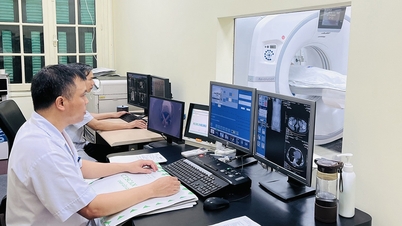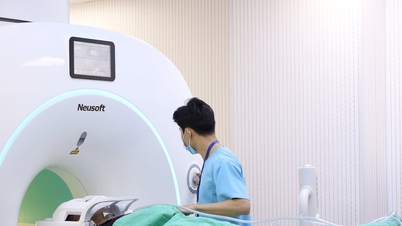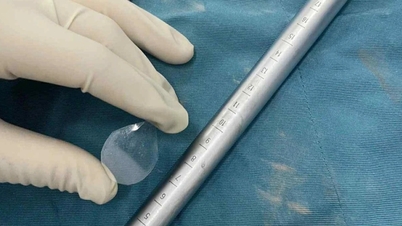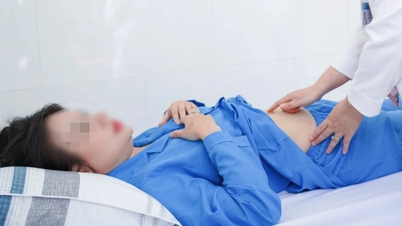On May 24, Dr. Tran Thi Ngoc Linh, Department of Voluntary Gynecology Examination, Hanoi Obstetrics and Gynecology Hospital, said that the IUD was still in the uterine cavity, and could be clearly seen by ultrasound but could not be accessed.
The doctor consulted and decided that the ring had been in the uterus for too long and needed to be removed immediately. The normal procedure for removing the ring is simple, but this case encountered many difficulties. The doctors removed a uterine fibroid along with the ring encased in the fibroid. The patient's uterus was preserved intact.
An intrauterine device (IUD) is a small device (usually T-shaped) that is inserted into the uterus to prevent pregnancy. The two common types of IUDs today are the T-shaped and the arc-shaped IUD. The mechanism of the IUD is to cause an inflammatory reaction in the uterine lining, changing the biochemical structure of the endometrium, preventing the fertilized egg from implanting in the uterus.
The IUD is a temporary contraceptive method for women, highly effective, easy to perform, economical and effective for many years. However, the IUD can cause some complications such as menorrhagia, back pain, misplacement, bleeding, intestinal perforation or peritonitis.
Doctors recommend removing the IUD after 5 years when it has stopped being effective as a contraceptive. During the time the IUD is in place, regular gynecological examinations are needed or when there are unusual signs to detect complications and treat them promptly.
Minh An
Source link


![[Photo] Keep your warehouse safe in all situations](https://vphoto.vietnam.vn/thumb/1200x675/vietnam/resource/IMAGE/2025/10/1/3eb4eceafe68497989865e7faa4e4d0e)

![[Photo] Hanoi morning of October 1: Prolonged flooding, people wade to work](https://vphoto.vietnam.vn/thumb/1200x675/vietnam/resource/IMAGE/2025/10/1/189be28938e3493fa26b2938efa2059e)
![[Photo] President of the Cuban National Assembly visits President Ho Chi Minh's Mausoleum](https://vphoto.vietnam.vn/thumb/1200x675/vietnam/resource/IMAGE/2025/10/1/39f1142310fc4dae9e3de4fcc9ac2ed0)



























































































Comment (0)